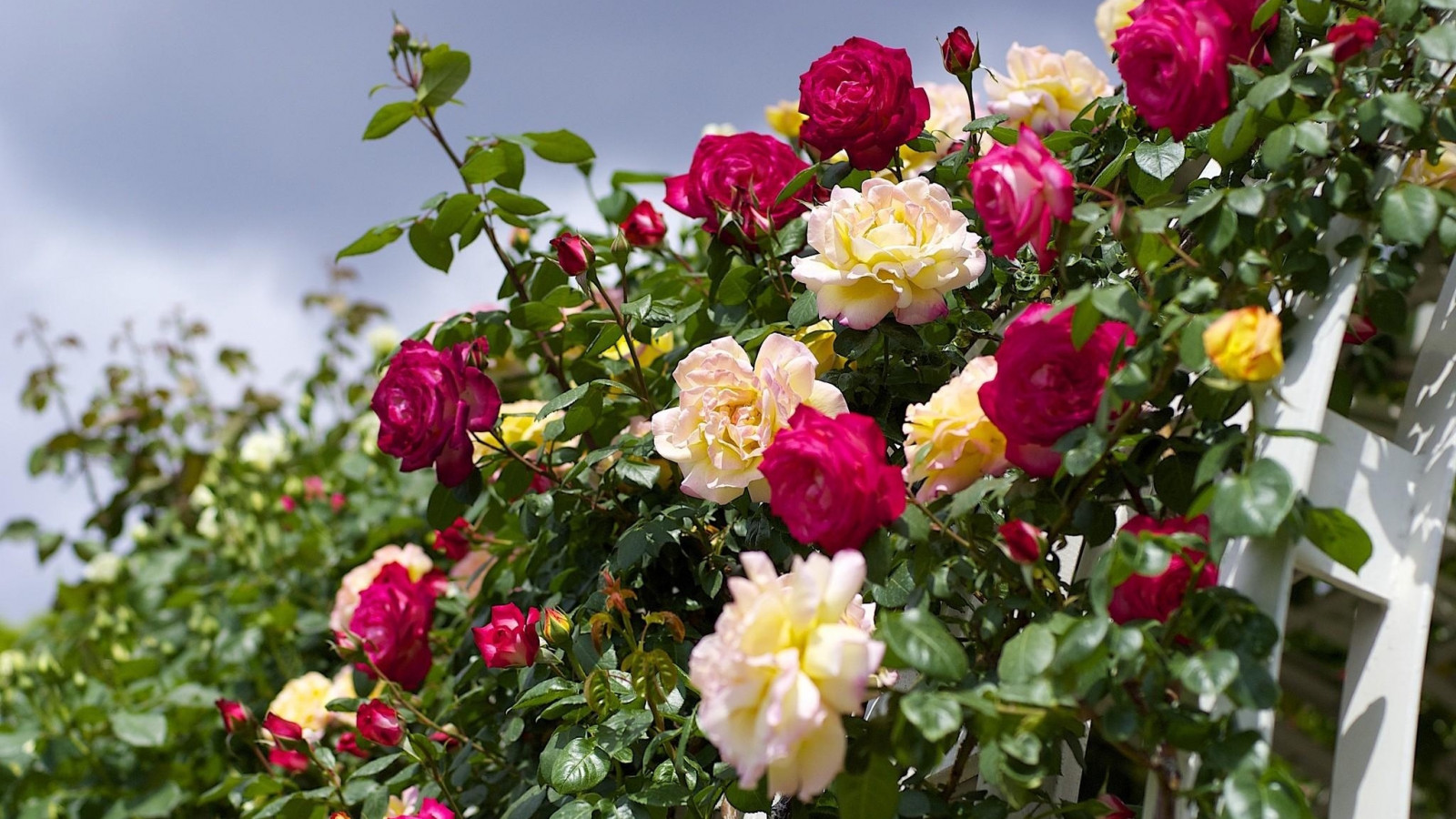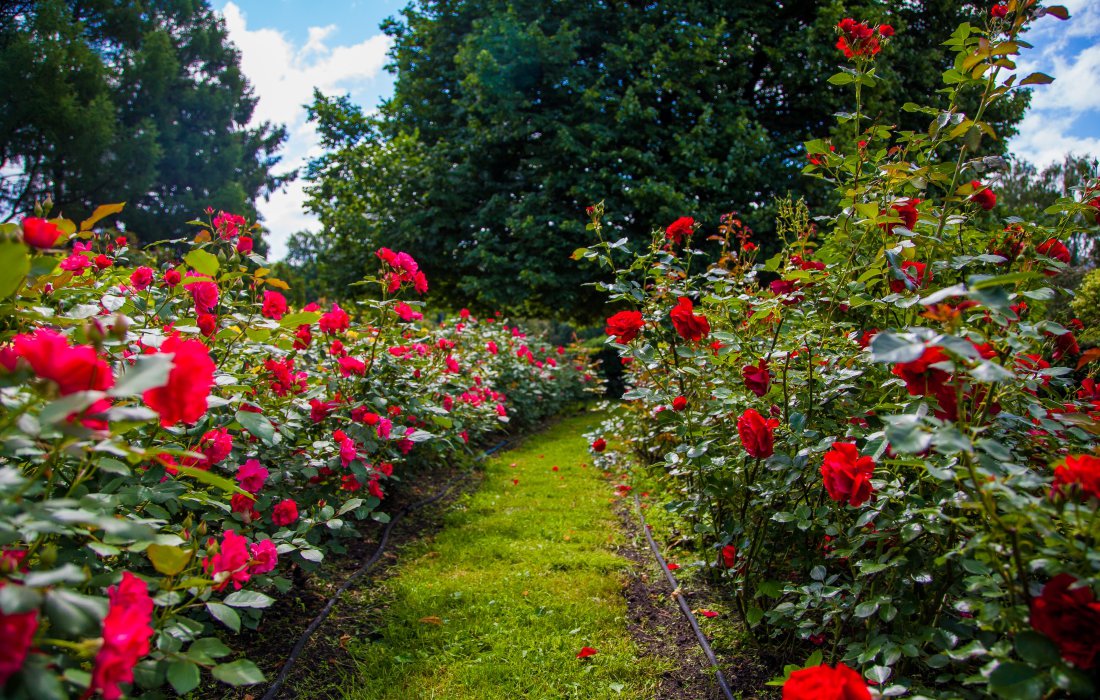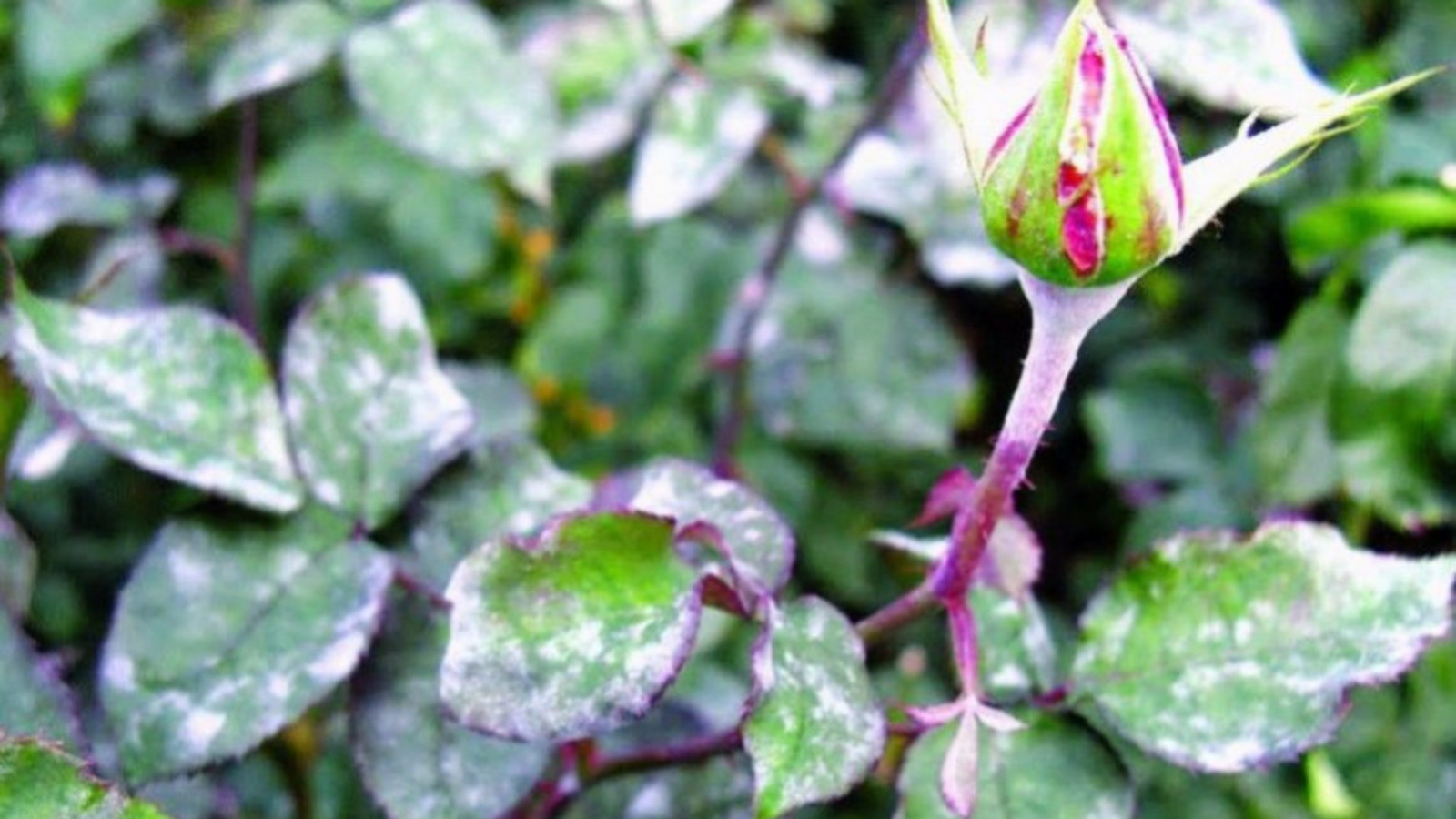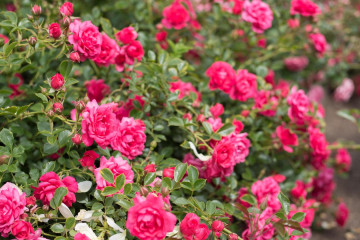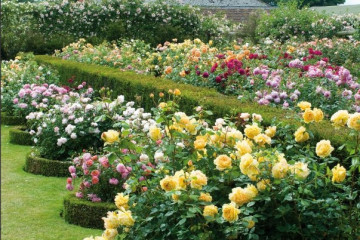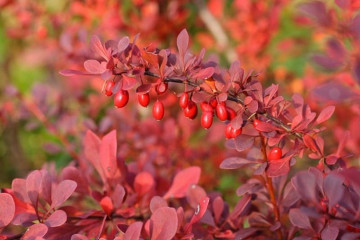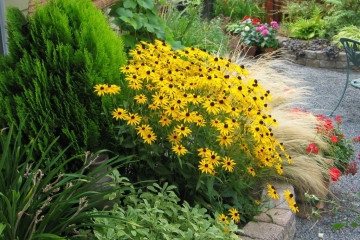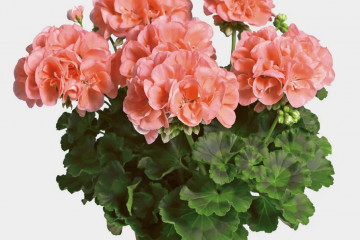Small garden roses - popular varieties
Content:
Dwarf roses are ideal for decorative purposes. They can decorate both the summer cottage and the window sills in the apartment. To get bright, lush miniature flowers, you need to know the peculiarities of caring for them.
Dwarf roses - what is this group of garden flowers
Small roses are a variety of lush flowers that originated in China. Local breeders, after many years of hard work, were able to breed ornamental plants, which soon gained popularity in Europe.
All types of miniature roses are similar in size to the bush, but differ in the structure, shape and shade of the petals. In addition, the following features of small roses can be distinguished:
- The buds can be one or two colors.
- A distinctive feature of dwarf varieties is that the stems grow only upward, creating a lush bush.
- During the ripening process, the petals can change color.
- Flowers are usually collected in bunches of 5-20 buds.
- With proper care, domesticated species can bloom all year round.
These plants can be grown in almost any form - standard, trellis, climbing and, depending on the variety, can be both perennial and annual. Due to this, they are used in different ways in landscape design. Flowers are grown in pots, flower beds. They are used to create curbs and alpine slides. All that is needed for this is to choose the type of mini rose you like.
The best varieties of miniature roses for growing outdoors and at home
Among all the diversity of this variety, the most prominent representatives stand out:
- Jewel. A bushy variety with rounded leaves, bright red petals and a yellow center. Blooms from early summer to mid-autumn. A cut branch can stand for almost two weeks.
- Clementine. Ground cover hybrid with double buds. The ripe bud has a tangerine hue and a delicate citrus aroma. Has a high immunity to various diseases.
- Cinderella. White buds become soft pink over time. If the plant is properly cared for, it can bloom several times per season.
- Hummingbird. Dwarf garden rose with small semi-double buds. Blooms from June to September. When grown in southern regions, it can survive the winter without shelter. The apartment grows in pots or pots.
- Lavender. Medium-sized shrub with purple buds. Flowers grow on branches singly or in clusters of 3-5 pieces.
- Daniela. Compact miniature bushes with one distinctive feature - cupped buds with pointed ends. They have high frost resistance, but weakly resist fungal diseases.
- Gold Symphony. Small roses with some of the largest buds among the dwarf varieties. The petals can be golden yellow or yellow-orange in color.
- Thumb boy. A fairly young variety, bred in 2008. It became so called because of the structure of the bush - there is very little greenery on the branches, so the buds are located on practically bare shoots, resembling fingers.
- Amulet. Small pink roses are distinguished by an unusual appearance of buds - having blossomed, they more resemble chrysanthemums.
Mini roses in the garden - planting and care in the open field
It is best to plant dwarf flowers in open ground in the fall. At the same time, it is recommended to purchase seedlings. To plant them, you must choose a lighted place, protected from winds and drafts.
Planting should be carried out in slightly acidic, fertile substrates. The seedling itself must be placed in water for several hours before this. After that, landing is performed in a step-by-step sequence:
- A hole is dug a little larger than the size of the roots. The soil is mixed with compost.
- The rose is placed in a hole and covered with soil.
- It is recommended to leave at least a meter between seedlings.
How to grow small roses at home
Small roses are flowers that can be grown in pots at home. It is important to remember that they do not tolerate cold water and coolness in summer. The acquired plant must be given time to acclimatize, then be sure to transplant. With the onset of warm nights, the pot with the plant can be taken out to the balcony.
Plant care
Caring for mini roses is simple. They must be regularly watered and loosened after each wetting. It will not hurt to spray the plant. You need to feed the bush four times per season - in early spring, in late spring, in mid-summer and early autumn.
To shape the bush, it needs spring pruning. In the fall, only weak and dried branches should be removed. A dwarf rose should be transplanted only in the most extreme cases, when the pot becomes too small. After that, it must be left for a week in a dark place, and then transferred to the light.
Many varieties of dwarfs in warm regions survive the winter without problems. However, some of them should be prepared. To do this, they tear off all the leaves, cover with insulation or film. In this case, one must not forget to regularly open the bushes for airing.
Blooming rose
In the open field, roses bloom from early summer to autumn. At home, you can achieve flowering throughout the year. Throughout this time, they must be regularly fed with complex fertilizers. With the onset of a dormant period, the pot with a bush must be moved to a cool place.
In some cases, the dwarf rose may not bloom. This is usually due to the small size of the pot, lack of lighting and nutrients in the soil.
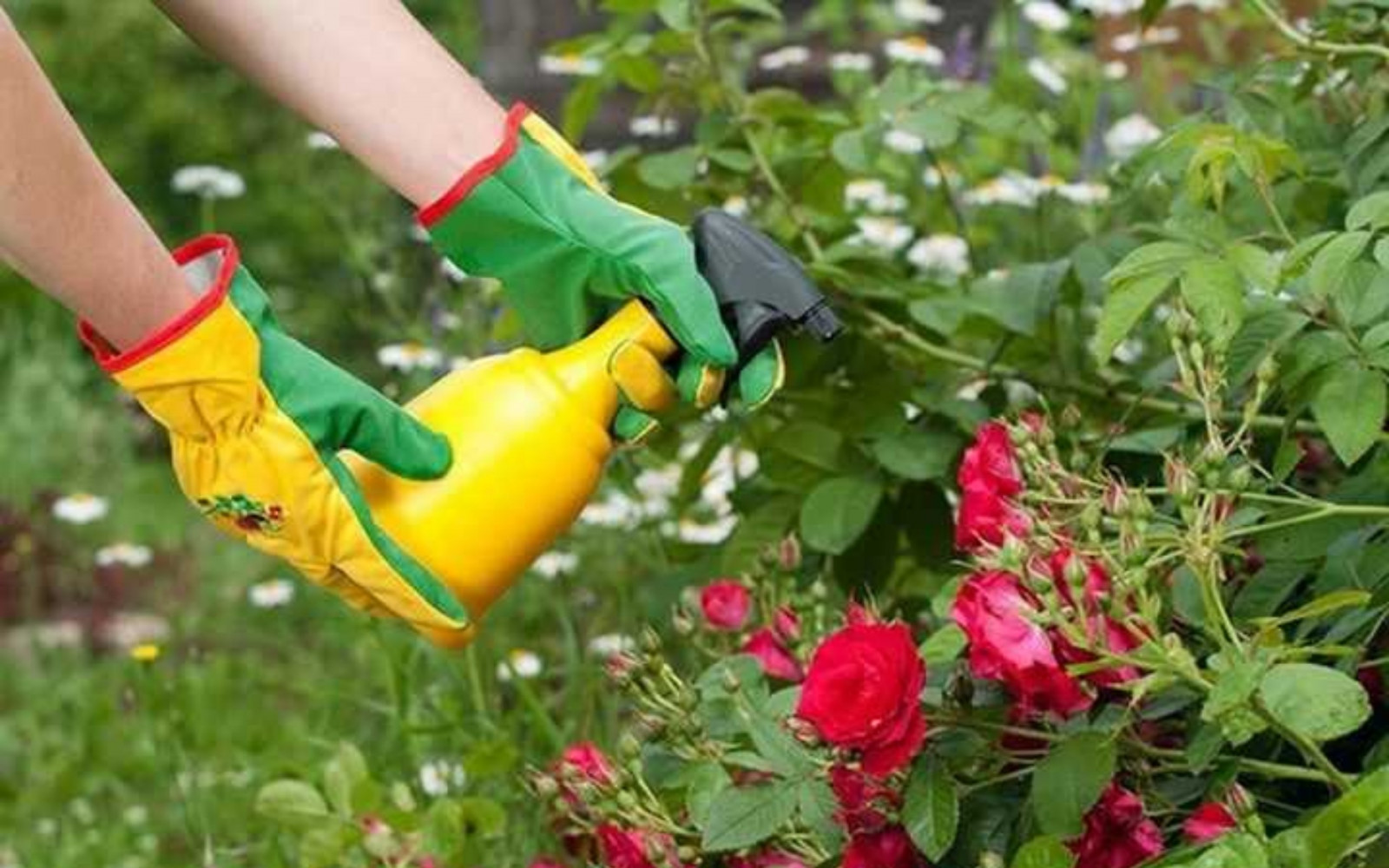
For the appearance of bright and lush buds, the rose needs proper care during the period of rest and flowering.
Flower propagation
Houseplants should be propagated in the fall after pruning. For this, the grafting method is used. It is executed in the following sequence:
- A stalk about 10 cm long is cut with a knife.
- All leaves must be removed from it.
- Place the cutting in water for 10 hours.
- After that, deepen into a mixture of sand and peat.
When the seedling grows roots and leaves appear on it, it can be transplanted to a permanent place.
Diseases and pests
With proper care, most rose varieties are resistant to disease and pests. However, sometimes powdery mildew, spider mites or aphids may appear on dwarf flowers. Regular treatment with fungicides and insecticides will help get rid of problems.
Small roses are flowers that are perfect for creating a bright background in a garden or decorating a house. They are unpretentious in care and delight owners for a long time with small buds of different shades.
